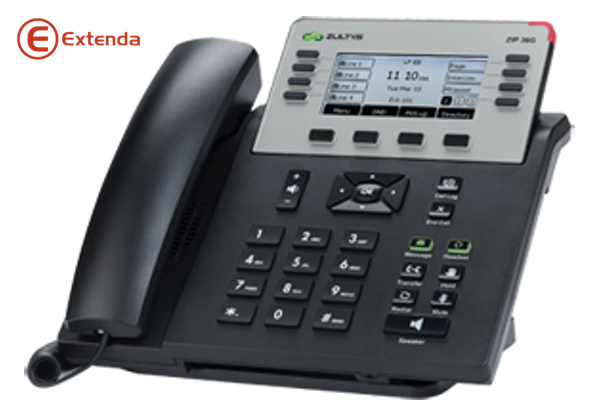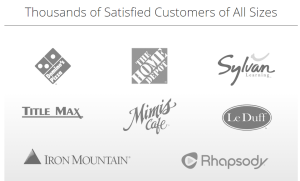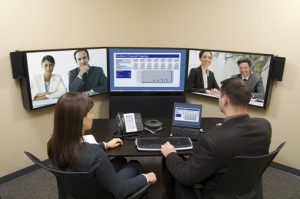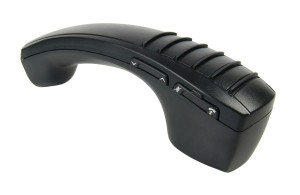The Zultys system is second to none when it comes to the auto industry. As this post points out, the Zultys feature set really addresses some key concerns of this vital sector of the Southern California economy.
Why auto dealers choose Zultys
Call Recording
The system has a built-in call recorder. This is ideal for documenting service requests and work approvals. It allows users to engage in conversations instead of passively transcribing notes. This also lets you cancel 3rd party call recording services that can cost thousands of dollars each month, and store all the recordings securely on site.
Call Reporting
Built in to the system, you have a full historical call detail program. This invaluable business intelligence can help auto dealerships gauge the effectiveness of marketing campaigns, audit their at times considerable phone bills, and monitor call traffic as well as employee productivity.
Auto Dialer & IVR
The Zultys has a built in automated dialing and playback system for confirming service appointments, confirming sales appointments, conducting customer service and satisfaction surveys, sending appointment reminders, and more – you can even customize the IVR to handle payments, provide status updates and handle any number of automated transactions.
Unified Communications for Auto
Real-time presence, status and messaging. The three hallmarks of Unified Communications (UC) are vital to auto dealerships and actually can help explain these features to people new to this technology.
Presence
Presence means seeing if coworkers are available for a call, email, meeting or otherwise around.

Per my Zultys MXIE: Brandi is off. Donovan is not plugged in. Anthony and Doug are ready.
Being able to see presence on a computer means I can get answers quicker without paging overhead, wandering the halls, or sending emails and leaving voicemails hoping for a callback.
For dealerships, being able to track down salespeople, sales managers, mechanics, finance personnel and even janitorial staff is critical. The purchase and repair processes are fraught with mistrust, risk and negativity. Quickly processing transactions can increase success rates and finding the right people and getting answers fast is a key to success.
Status
Status may seem similar to presence, but it dovetails in nicely with the Find Me / Follow Me features of the Zultys system so deserves a separate entry. Whereas Presence is about finding other people, Status is where I tell my team what I am up to.

I let my colleagues know what I am up to
The simple form of this is by simply picking a status and typing notes on this status. So, I am ‘Out of the Office’ and my note is ‘Back by 3pm’ which can be relayed to people trying to reach me or serve to let my colleagues know they can reach me via IM on the MXIE, text message or to talk to an alternative coworker.
Find Me / Follow Me in Zultys is triggered off rules I set for the status. I can decide that, based on my status, calls travel a certain way. So for example, if I am in the office but on the phone, my calls should go to voicemail. But if I am out of the office, my calls should go to my cell phone. The intuitive, flexible Find Me / Follow Me rules in the Zultys make cell phone integration very easy to implement. They also remove an expensive bone of contention with IT, who no longer has to micromanage call forwarding for each user, keep cell phone lists up to date, and learn the intricacies of a system forward.
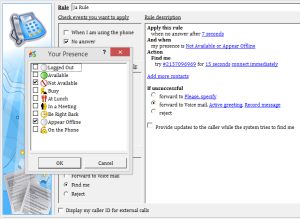
Fine tune how your calls reach you based on your day
For auto dealerships, Status can help managers locate their human resources and make sure staff is on task. But the real power of the Status comes from sales personnel and repair staff to be able to shift calls around and take customer requests while they are in transit, between tasks, or in an area where they only have a cell phone available. It increases responsiveness and allows for a more productive use of time.
Messaging
Unified Communications (UC) messaging includes a few critical components.
Instant Messaging allows users to type in real time with each other, in case you had no idea. With Zultys MXMobile, this includes chat on mobile devices such as iPhones, Android phones and tablets, and iPads.
The advantage of moving to MXIE and Zultys for chat instead of using email, texting (SMS), or third party add-ins like Lync is that integrating chat into the phone system allows you to see all of your real-time communications in one place. Users can initiate a call, video session or chat, right from the desktop. You can also have voice messages and voicemail automatically initiate an email that can serve as a notification or as the actual message.

